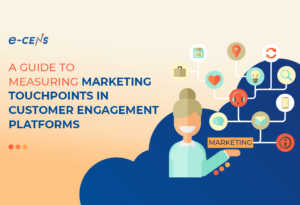Google Analytics 4 (GA4) has an interesting heritage — leading to GA4 being the first Google Analytics solution that supports both Web and Mobile Analytics.
So what does GA4’s arrival as Google’s new default analytics property mean for Firebase users? Can GA4 now fully replace Google Analytics for Firebase, or should they be used in parallel?
This article considers Google Analytics vs. Firebase and answers this question.

What is Firebase?
Firebase is a feature-rich app development platform backed by Google that helps you build, improve, and grow your app.
The company was founded in 2011 with the goal of assisting with building functional and adaptable Android, iOS, and web apps. Having recognized its potential for future app development and analytics, Google acquired Firebase in 2014.
Firebase became the leading mobile-backend-as-a-service (MBaaS) company when it introduced Firebase Authentication and Firebase Hosting. The Firebase team was expanded the next year when Google acquired Divshot, a web-hosting platform for advanced performance and productivity.
Today, developers rely on Firebase to take care of a substantial part of app development and user experience maintenance — from configuration, authentication, and file storage, to deep linking, personalization, and analytics.
Out of more than 20 different products in the Firebase toolkit, two focus explicitly on app analytics: Firebase Crashlytics and Google Analytics for Firebase (also known as Firebase Analytics for short).
Google Analytics for Firebase reports on essential performance and user experience metrics, such as:
- user demographics
- engagement and retention
- crash rate
- conversion events
- deep-link performance
Furthermore, Google Analytics for Firebase provides its users with attribution data, as well as the option of easy audience segmentation.
What is Google Analytics 4?
Google Analytics 4 is the new version of Google analytics that has replaced the previous version of Google Universal Analytics/ GA3 since October 2020. It was clear from the start that this won’t be just another Universal Analytics update.
The differences between these two analytics platforms include, amongst other things:
Check out the major differences between GA4 vs GAU in our in depth comparison article.
Most importantly, while Universal Analytics only supports Web Analytics, Google Analytics 4 offers both Web and Mobile Analytics.
So, how do GA4’s Mobile Analytics capabilities stack up to Firebase Analytics?
Difference between Firebase Analytics and Google Analytics
Even though Firebase started as an independent platform, it was acquired early and developed further by Google. That’s why it shares many features with GA4.
For example, when looking at Google Analytics vs. Firebase, we see that they have the same data model — one that depicts user interactions as events.
That’s why both platforms also share the same implementation process — the only difference between Firebase Analytics and Google Analytics in this regard lies in where you first set up your Android and iOS data streams.
Android and iOS data streams automatically sync with a new Firebase project when you first create those paths in GA4. If you wish to set up GA4 data streams by using the same data streams that you already have in Firebase, you only have to go through one easy integration step. Once that is complete, you will have an abundance of optimization, analytical, and marketing features at your disposal.
The synergy between Firebase and Google Analytics allows you to create up to 500 distinct events by using software development kits (SDK) from Firebase.
Google Analytics vs. Firebase: Terminology
| Google Analytics for Firebase | Google Analytics 4 |
| Project | Property |
| iOS, Android, and web versions of your app | Streams |
| User Properties | Dimensions |
| Filters | Comparisons |
Why Integrate with GA4?
The upcoming sunset of Universal Analytics is a trivial motivation for integrating Firebase Analytics with Google Analytics 4 when you consider the benefits to be gained from their integration.
In fact, considering the multiple benefits that come with Firebase-GA4 integration, this story becomes less about Google Analytics vs. Firebase, and more about discovering the multiple benefits of utilizing both of these tools in parallel.
1. Increase mapping limits
If you’re only using Firebase for your Mobile App analytics, you are allowed to map 10 custom dimensions and 40 custom metrics.
And, as analytics perform best when tailored to your business, the limit of 10 custom dimensions can severely hamper your insights. With GA4 integration, this limit increases to 50 custom dimensions — giving you plenty of room to map out your tracking essentials.
2. Access more reports
GA4 also offers a wider range of pre-built reports in comparison to Firebase Analytics, such as:
- Funnel Exploration: explore your funnel through sets of 3 variables (segments, dimensions, and metrics)
- Path Exploration: discover your most-visited screens and learn more about how users move through your app
- Segment Overlap: understand the common threads between your audience segments
3. Combine your Mobile App and Website analytics into one reporting view
The ultimate advantage of integrating Firebase Analytics with Google Analytics 4 is the amount of time it saves you.
Instead of juggling multiple tools to access similar analytics data, you can have a reliable overview of both your Website and App performance — all in one place.
Conclusion
The histories of Firebase and Google Analytics 4 developments can often create confusion between the two platforms and their capabilities.
While GA4 is quickly becoming the go-to data analytics platform instead of Universal Analytics, Firebase is still indispensable when it comes to App development and maintenance.
That’s why e-CENS recommends using both platforms in parallel — leveraging the advantages of each on their own, as well as the benefits of their integration.
Haven’t set up your GA4 property yet?
Contact us at e-CENS to learn more about migrating to Google Analytics 4. Our clients trust us to advise and manage their data to achieve competitive advantage and successful business outcomes — and we look forward to helping you unlock the power of your data.




